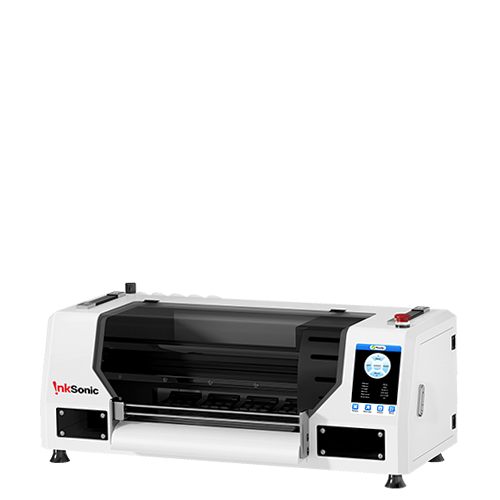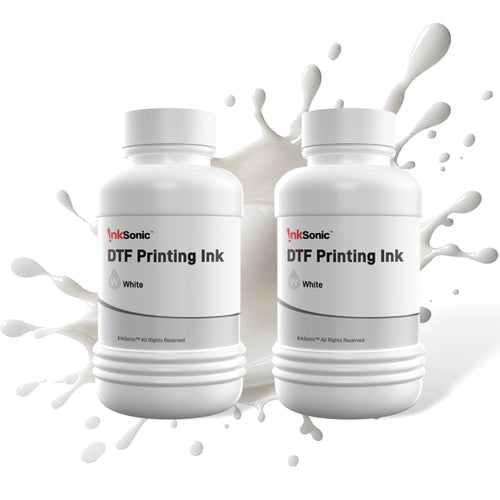In 2025, DTF (Direct to Film) printing isn’t just a trend anymore—it’s everywhere. If you’ve been in the apparel space, you’ve probably noticed it popping up on TikTok, Etsy, even local print shops.
Why? Because it works. The colors are sharp, it handles pretty much any fabric, and—unlike some traditional methods—it actually plays nice with small-batch or one-off orders.
That’s exactly why a lot of folks are ditching full garment production and diving into DTF transfers instead. You don’t need racks of T-shirts or a warehouse. Just high-quality transfers, a heat press, and clients who need cool designs—now.
But let’s be real: just buying a printer doesn’t guarantee success. You need to understand the market, pick the right gear, handle your materials well, and offer something people can rely on.
This blog will walk you through what actually matters—so you don’t just print... you profit.

1. Market Feasibility: Is DTF Transfer a Trend or a Long-Term Opportunity?
To put it simply, DTF Transfer is not just a passing fad. It has already become a foundational infrastructure for the custom apparel industry.
We are focusing on producing DTF Transfer graphic films — providing ready-to-use, high-quality designs to custom clothing manufacturers, designers, and brands. They heat-press these onto T-shirts, hoodies, hats, tote bags, and ship the finished products. You are the upstream supplier; they are the retailers.
Why is this path more worthwhile now?
Changing e-commerce trends: Consumers increasingly prefer personalized, fast-reacting, and eco-friendly apparel. Clothing entrepreneurs on TikTok Shop, Etsy, and Instagram Reels are booming — and they naturally need quick-turnaround, small-batch DTF Transfer services.
Lower barrier to garment making fuels downstream growth: Heat press machines are becoming cheaper, tutorials are everywhere, and more people are trying DIY heat pressing → this means more people need to buy transfer films.
Designers don’t want to handle printing, they prefer finished films: More designers just want to focus on creativity and branding without investing in machinery or supplies. They prefer buying ready-made transfer films from reliable suppliers — fast, stable, and hassle-free.
Technology stability has greatly improved: Compared to 2022, the quality of DTF printers, inks, and transfer films in 2025 is far better. The image quality is more stable, colors are more vivid, customer satisfaction is higher, and repeat orders become easier.
DTF Transfer is essentially part of a "tooling trend": The more people make custom clothes, the more customers you will have. You are not selling printing technology; you are selling a full solution that helps others quickly launch their own custom apparel brand. This is not a short-lived boom but a long-term structural opportunity.
As long as custom apparel remains popular and people prefer not to produce graphics themselves, the opportunity in DTF Transfer will persist. You stand at the gate, collecting the “toll” for all designs passing through.

2. Equipment Investment
To profit from DTF Transfer, equipment investment is unavoidable. But it’s not about throwing money blindly; it’s about choosing the right setup for your current stage. Many jump into high-end machines impulsively, only to be crushed by a lack of orders and heavy hardware costs.
Below is a simple reference table covering printers, supplies, and necessary auxiliary devices, giving you an overview of basic startup costs for DTF (prices for reference only):
Item |
Price Range |
Notes |
DTF Printer |
$1,500 – $3,900 (Entry level) |
Entry-level for individuals/small studios; |
DTF Ink |
$80 – $120 / liter |
About $0.08 – $0.12 / ml |
Transfer Film |
$0.31 – $1.00 / sq ft |
Varies by thickness, brand, bulk quantity |
TPU Hot Melt Powder |
$15 – $35 / 500 grams |
Usage depends on design size and powder coverage |
This table sketches a basic configuration and cost range for entering the DTF Transfer business. But numbers are only the starting point — what really matters is your understanding and mastery of each material and equipment feature.

Let’s break down the details to help you grasp the logic behind every step and avoid unnecessary detours.
DTF Printer
The core equipment for starting DTF Transfer is, of course, the DTF printer. Models in the market generally fall into three categories: entry-level desktop, mid-tier commercial, and industrial high-capacity machines.
Most beginners opt for entry-level desktop printers priced between $1,500 and $3,900. These are easy to operate, compact, and fit well for individuals or small studios starting out. They handle moderate print volumes and reduce initial risk. Paired with a basic powder shaker and dryer, you can start receiving orders and run the full workflow.
As orders stabilize and your client base grows, upgrading to faster, wider mid-tier machines ($4,000–$12,000) can be considered — but that usually comes later.
The key to equipment selection is not splurging on the most expensive machine at once, but choosing a stable, reliable model that suits your current business model. Master that before upgrading, and you’ll build your business steadily without hardware pitfalls.
DTF Ink
DTF ink prices typically range from $80 to $120 per liter, roughly $0.08 to $0.12 per milliliter. On average, ink cost per print runs about $0.50 to $1.50. While ink is a significant consumable expense, high-quality ink reduces nozzle clogging and color deviations, ultimately protecting both your equipment and final product quality. Don’t skimp just to save a few bucks.
Transfer Film
As a DTF Transfer service provider, your clients trust that your films will "work perfectly on the first press." The choice of transfer film is crucial to this promise.
Market prices for transfer films hover around $0.31 to $1.00 per square foot, depending on thickness, coating process, and surface finish (matte or glossy). Proper film selection dramatically impacts final quality. Key factors include uniform coating and anti-static properties. Too thin coating causes ink bleeding and blurry prints; too thick leads to residue and poor image release. Excessive static attracts dust and lint, dirtying edges and ruining the look. Therefore, choosing a film isn’t just about price; compatibility and pressing performance are decisive.
DTF TPU Powder
Priced around $15 to $35 per 500 grams, this powder determines the adhesion strength, softness, and wash durability of your prints. Don’t underestimate its importance.
3. How to Make Money With Custom DTF Transfers?
Anyone can print DTF films, but the key to profit is whether your prints sell out quickly.
Build Your Unique Design Style (Design Differentiation)
Don’t just be a printer that copies whatever clients send you — that makes you a machine extension.
💡 Profitable films come with a design premium.
Integrate trendy elements (anime, memes, holiday themes)
Research TikTok viral aesthetics (Y2K, Blokecore, Glitter Gothic, etc.)
Launch themed series to encourage repeat purchases (e.g., “Back to School Packs”)

💡 Build your personal brand so your designs bring their own traffic.
When you know your target audience and the people you serve, start building your own DTF Transfer brand.
For example, if you focus on merchandise for indie musicians, illustrators, or anime communities, you can mirror their visual style and culture, even using fan language to create a co-branded feel. Clients won’t just buy designs; they’ll follow you because you “get them.”
Pick a memorable, distinctive brand name and logo
Compile your designs into a portfolio and showcase on Instagram, TikTok, Pinterest
Define a clear brand positioning like “otaku-focused,” “edgy,” or “campus culture specialist”
Attach a catchy slogan to reinforce memory
DTF Transfer is just a tool — what you’re really selling is your visual language, so customers immediately recognize “this is from you” when they wear your prints.
Lock in Niche Clients and Become Their “Go-To Film Supplier”
Don’t try to serve everyone. Picking the right clients is more important.
Your job is to proactively find the best clients who value what you offer, provide them with continuous supply, and become their trusted film factory. Rather than quoting every request and taking all orders, focus on a small group of customers with long-term potential and serve them deeply and reliably.

👕 Suggested target clients:
- TikTok/Instagram apparel influencers (who don’t print themselves, just sell)
- Small e-commerce brand owners (repeat orders, long-term cooperation)
- School uniforms, dance groups, event organizers (high-frequency small orders)
Remember: you’re not selling films; you’re solving their problem of quickly turning creative ideas into sellable products.
When you lock onto this group and understand their language and pace, you don’t just sell films — you sell trust and long-term partnerships. Beyond price wars, real profit comes from clients who can’t live without you.
Quality Is the Foundation for Big Orders
Printing fast doesn’t mean printing well. Many start off making quick money but later get buried by unstable film quality causing color shifts, blurry edges, pressing failures, and costly reworks.
These problems often stem from mismatched inks and equipment, uneven powder distribution, chaotic color management, or unstable printers that falter under heavy orders.
Though these seem like small details, they decide whether customers keep coming back.
To produce stable, high-quality transfers and avoid pitfalls, check out our detailed blog: Common DTF Printing Film Issues and Solutions , which helps you improve print stability and quality assurance.
At this point, owning a printer truly designed for commercial DTF Transfer is your profit guarantee, not just a cost.
With InkSonic printers , you’re not just printing — you’re winning stable, high-quality orders. While others struggle with color shifts and ink outages, you’ve already delivered 500+ flawless orders with rave reviews.
InkSonic is built specifically for commercial DTF Transfer, featuring industrial-grade print heads, intelligent temperature control, and professional color management presets. From artwork to finished product, it guarantees color accuracy, consistency, and stability. Whether you’re a startup studio or scaling your brand, InkSonic is your reliable engine for business growth and premium orders.
Stop relying on entry-level machines to meet high client standards. One InkSonic machine can open doors to lucrative orders with ease.

Offer Fast and Reliable Custom Service (Speed + Stability)
In 2025, customers care less about just being “cheap” — they want consistent quality delivered fast and reliably. Especially, they expect every order to arrive on time with the same great print quality, no back-and-forth on colors or pressing issues — basically “order today, ship tomorrow.”
If you can be that steady, efficient, and dependable transfer film supplier, clients will not only keep coming back but also bring referrals.
Delivery presentation matters too: Don’t just stuff films in plastic bags like homework sheets. Use standardized packaging (kraft paper envelopes, tubes), attach clear labels or QR codes showing client name and design number, making each shipment look like a premium branded product — even if you’re just a one-person studio.

4. Conclusion: Making Money with DTF Is More Than Printing — It’s Building a Brand
Starting a DTF transfer business isn’t about chasing hype—it’s a real, low-barrier way to get into the custom apparel game without stocking shirts or building a full production line.
If you can create high-quality transfers, master your workflow, and find the right customer niche—whether it’s merch sellers, boutique brands, or creators—there’s serious money to be made.
It’s not just about printing well. It’s about printing smart, staying consistent, and offering service people trust.
Ready to turn your designs into income? Start small, learn fast, and build a business that actually fits your life.
The best time to get in... was yesterday. The second-best time? Right now.
































